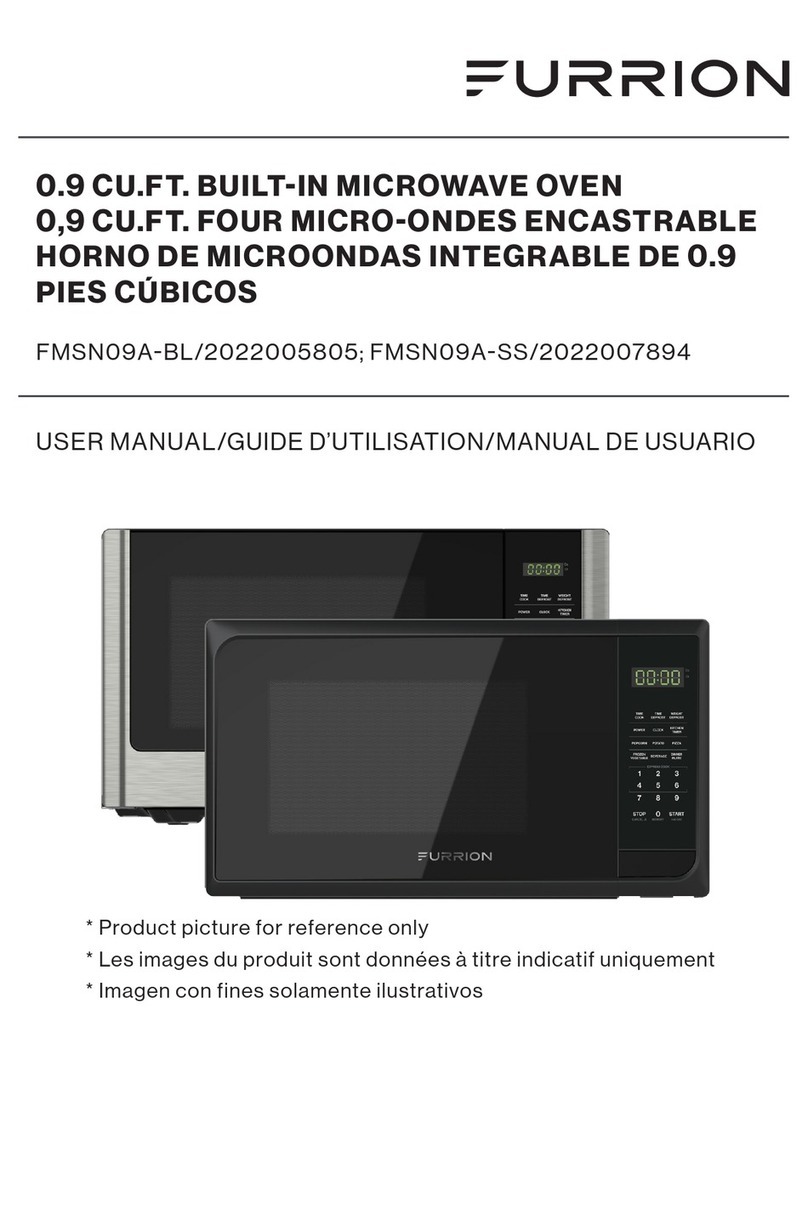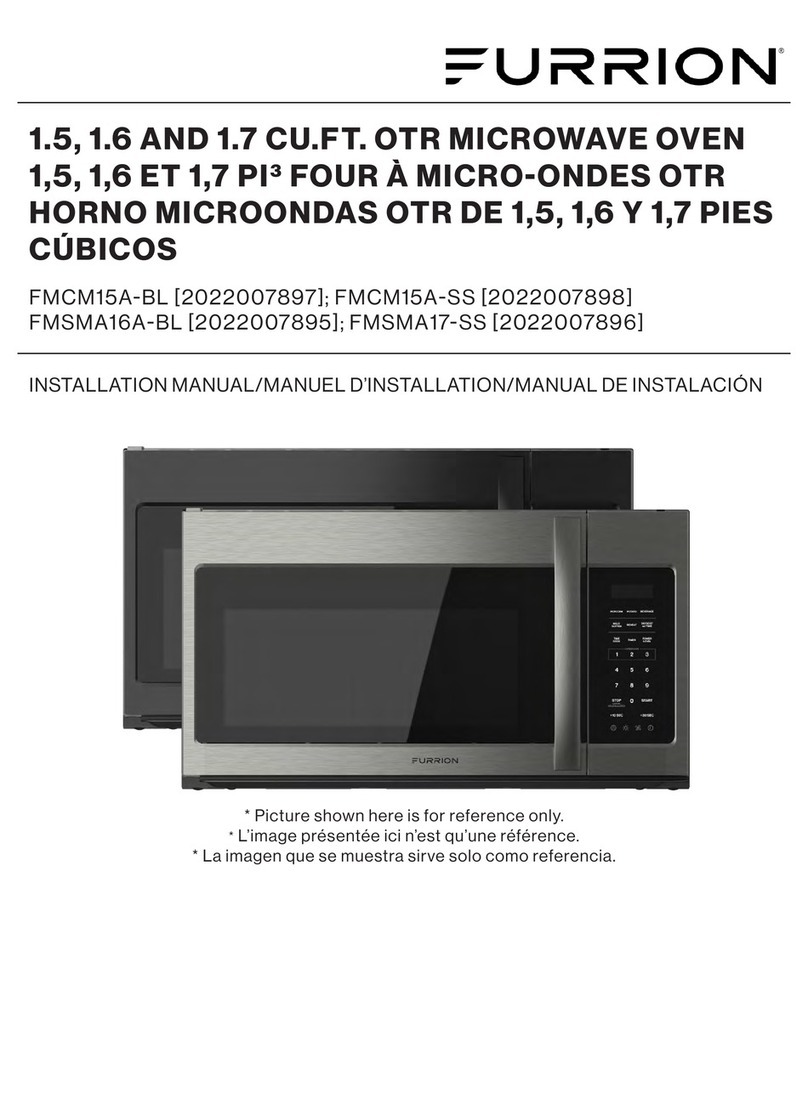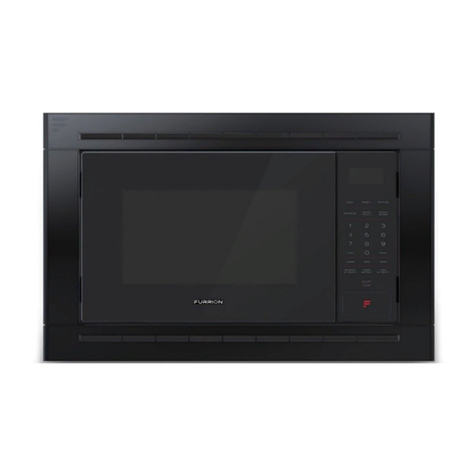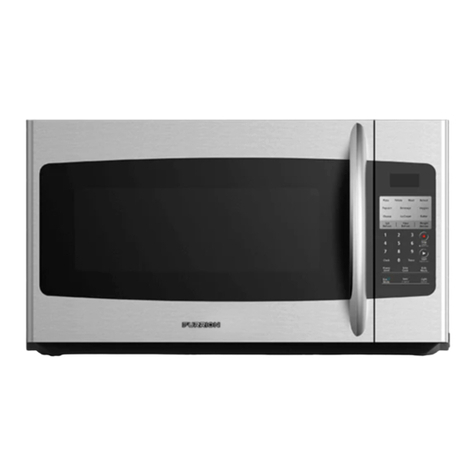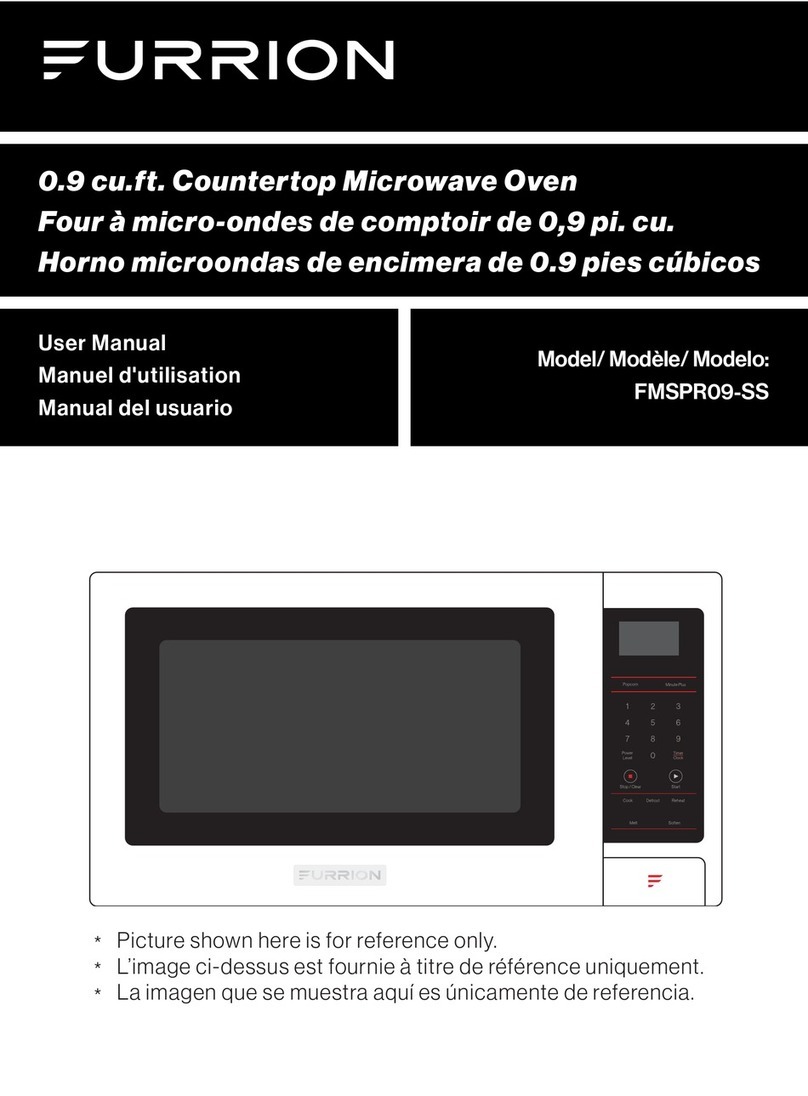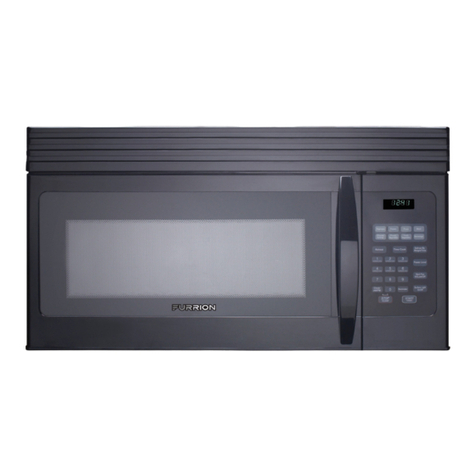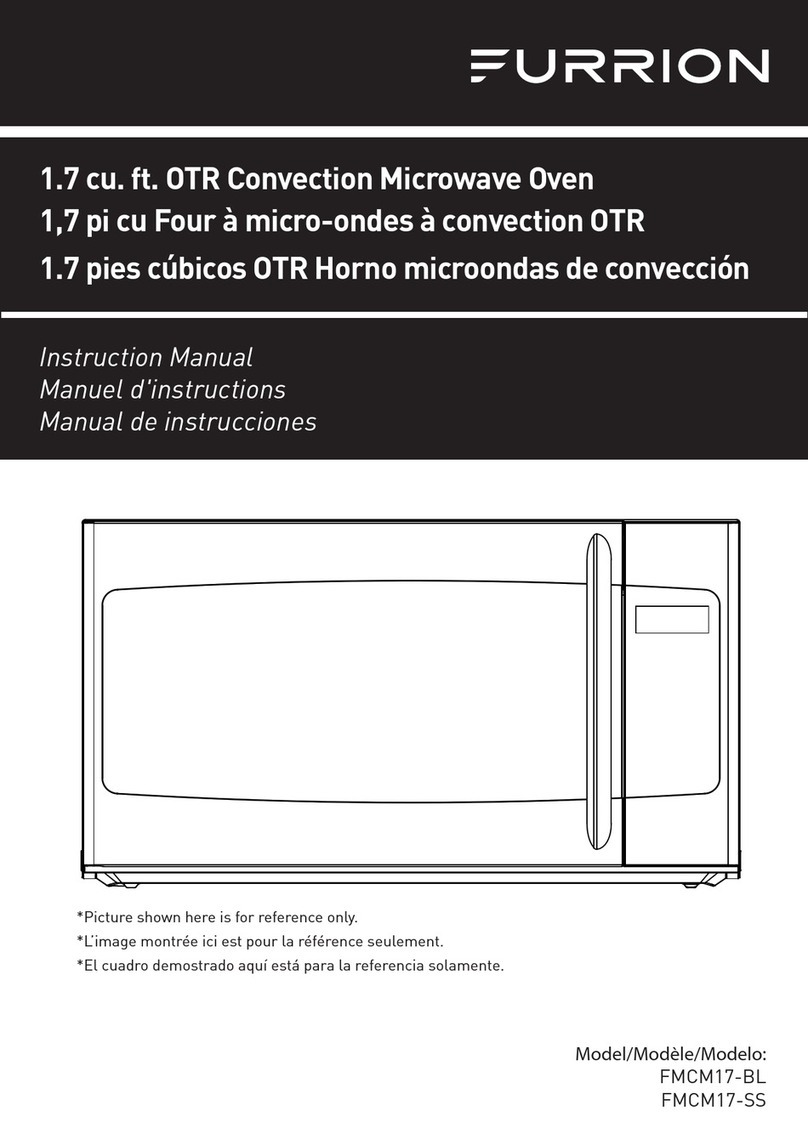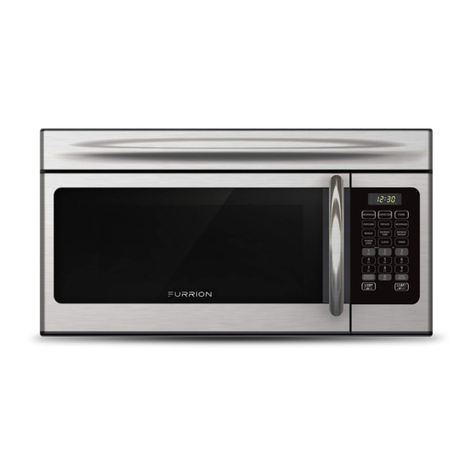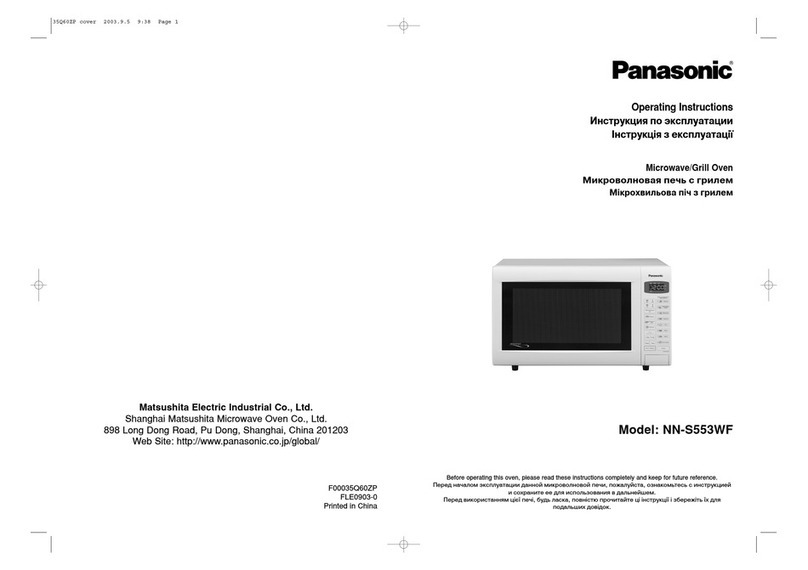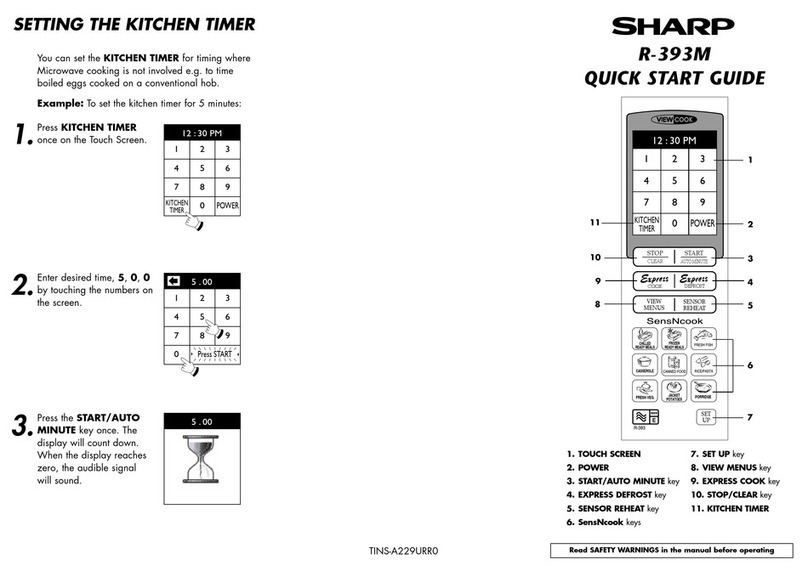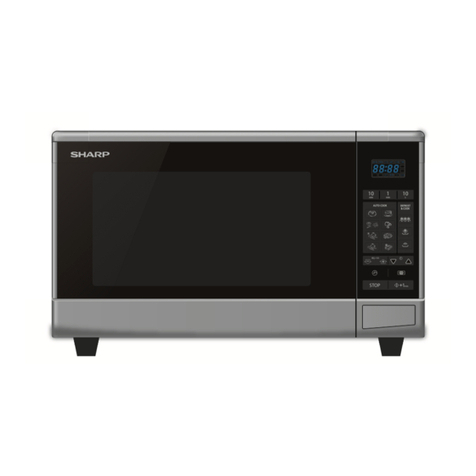
English
CCD-0006073 Rev: 09-16-22
- 2 -
EXPLANATION OF SYMBOLS
This manual has safety information and instructions to help you
eliminate or reduce the risk of accidents and injuries. Always
respect all safety warnings identified with these symbols. A
signal word will identify safety messages and property damage
messages, and will indicate the degree or level of hazard
seriousness.
DANGER
Indicates an imminently hazardous situation which, if not
avoided, will result in death or serious injury.
WARNING
Indicates a potentially hazardous situation which, if not
avoided, could result in death or serious injury.
CAUTION
Indicates a potentially hazardous situation which, if not
avoided, may result in minor or moderate personal injury, or
property damage.
IMPORTANT SAFETY INSTRUCTIONS
Safety Precautions
WARNING: To reduce the risk of burns, electric shock, fire,
injury to persons or exposure to excessive microwave energy.
When using electrical appliances basic safety precautions
should be followed, including the following:
1. Read all instructions before using the appliance.
2. Read and follow the specific “Precautions to Avoid
Possible Exposure to Excessive Microwave Energy"
section.
3. To reduce the risk of fire in the oven cavity:
–Do not overcook food. Carefully attend the appliance
when paper, plastic, or other combustible materials are
placed inside the oven to facilitate cooking.
–Remove wire twist-ties and metal handles from paper
or plastic containers/bags before placing them in the
oven.
–If materials inside the oven ignite, keep the oven door
closed. Turn the oven off, and unplug the appliance.
Disconnect the power cord, shut off power at the fuse
or circuit breaker panel.
–Do not use the oven cavity for storage purposes. Do
not leave paper products, cooking utensils, or food in
the cavity when not in use.
4. This appliance must be grounded. Connect only
to properly grounded outlet. See “GROUNDING
INSTRUCTIONS” section.
5. Install or locate this oven only in accordance with the
installation instructions provided.
6. Some products such as whole eggs and sealed
containers-for example, closed glass jars-are able to
explode and should not be heated in the oven.
7. Use this appliance only for its intended uses as described
in this manual. Do not use corrosive chemicals or vapors
in this appliance. This oven is specifically designed to
heat or cook or dry food. It is not designed for industrial or
laboratory use.
8. As with any appliance, close supervision is necessary
when used by children.
9. Do not operate this oven if it has a damaged cord or plug,
if it is not working properly or if it has been damaged or
dropped.
10. Liquids, such as water, coffee, or tea are able to be
overheated beyond the boiling point without appearing to
be boiling. Visible bubbling or boiling when the container is
removed from the microwave oven is not always present.
THIS COULD RESULT IN VERY HOT LIQUIDS SUDDENLY
BOILING OVER WHEN THE CONTAINER IS DISTURBED
OR A SPOON OR OTHER UTENSIL IS INSERTED INTO
THE LIQUID.
–Do not overheat the liquid.
–Stir the liquid both before and halfway through heating
it.
–Do not use straight-sided containers with narrow
necks.
–After heating, allow the container to stand in the
microwave oven for a short time before removing the
container.
–Use extreme care when inserting a spoon or other
utensil into the container.
11. Do not cover or block any openings on the appliance.
12. Do not store or use this appliance outdoors.
13. Do not use this oven near water, for example, near a
kitchen sink, in a wet basement, near a swimming pool, or
similar locations.
14. Do not immerse cord or plug in water. Keep cord away from
heated surface. Do not let cord hang over edge of table or
counter.
15. This appliance should be serviced only by qualified service
technicians. Contact the nearest authorized service facility
for examination, repair or adjustment.
16. When cleaning surfaces of door and oven that comes
together on closing the door, use only mild, nonabrasive
soaps or detergents applied with a sponge or soft cloth.
17. Ventilating Hoods
–Clean Ventilating Hoods Frequently-Grease should not
be allowed to accumulate on hood or filter.
–When flaming foods under the hood, turn the fan on.
18. Use care when cleaning the vent-hood filter. Corrosive
cleaning agents, such as lye-based oven cleaners, may
damage the filter.
19. Do not mount over sink.
20. Do not store anything directly on top of the appliance
surface when the appliance is in operation.
21. Suitable for use above both gas and electric cooking
equipment.
22. As with most cooking appliances, close supervision is
necessary to reduce the risk of a fire in the oven cavity.
